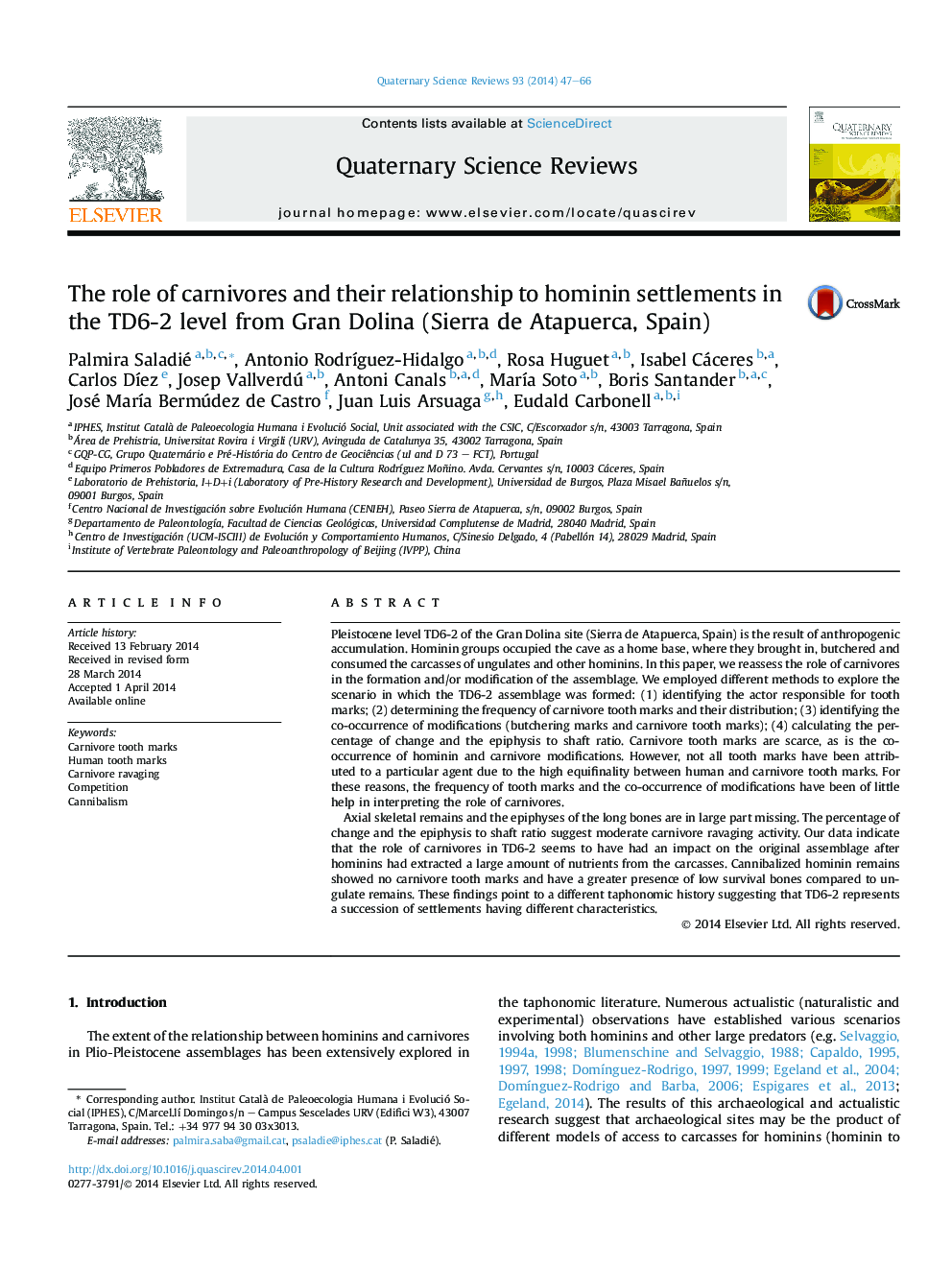| Article ID | Journal | Published Year | Pages | File Type |
|---|---|---|---|---|
| 6446250 | Quaternary Science Reviews | 2014 | 20 Pages |
Abstract
Axial skeletal remains and the epiphyses of the long bones are in large part missing. The percentage of change and the epiphysis to shaft ratio suggest moderate carnivore ravaging activity. Our data indicate that the role of carnivores in TD6-2 seems to have had an impact on the original assemblage after hominins had extracted a large amount of nutrients from the carcasses. Cannibalized hominin remains showed no carnivore tooth marks and have a greater presence of low survival bones compared to ungulate remains. These findings point to a different taphonomic history suggesting that TD6-2 represents a succession of settlements having different characteristics.
Related Topics
Physical Sciences and Engineering
Earth and Planetary Sciences
Geology
Authors
Palmira Saladié, Antonio RodrÃguez-Hidalgo, Rosa Huguet, Isabel Cáceres, Carlos DÃez, Josep Vallverdú, Antoni Canals, MarÃa Soto, Boris Santander, José MarÃa Bermúdez de Castro, Juan Luis Arsuaga, Eudald Carbonell,
